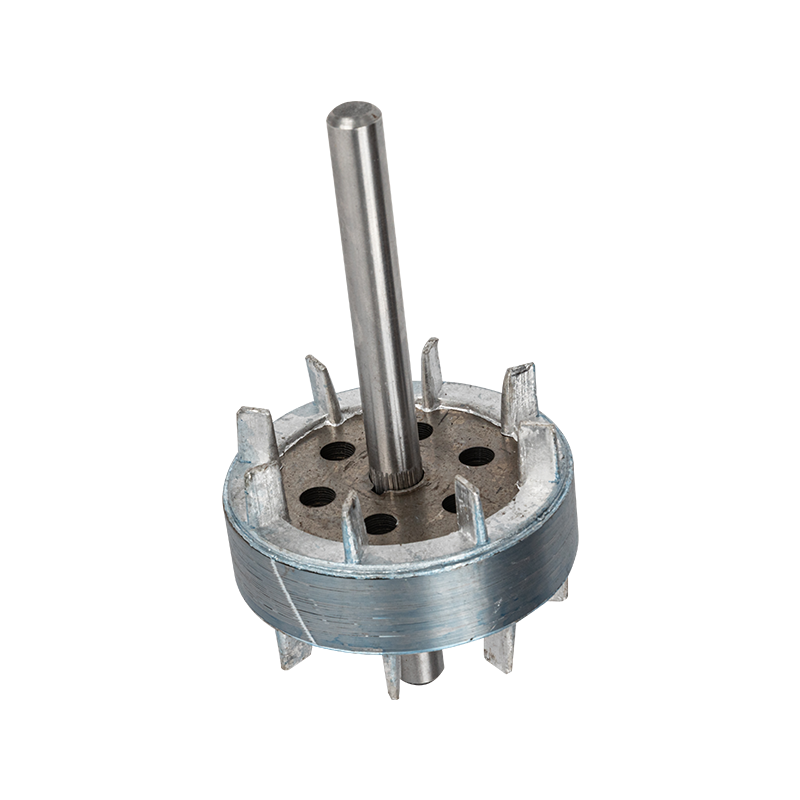Provide you with the latest enterprise and industry news.
1.Voltage Range Specifications:
Washing machine motors are engineered to operate within specific voltage ranges specified by manufacturers. These ranges are typically designed to accommodate normal variations in household electrical supply, which can fluctuate due to factors such as grid load, wiring conditions, and regional electricity fluctuations. For instance, a typical washing machine motor might be rated to operate safely within a voltage range of 110-120 volts or 220-240 volts, depending on the geographical region and electrical standards.
Manufacturers provide these specifications to ensure that the motor functions optimally without experiencing undue stress or risk of damage. Operating the motor within the specified voltage range is crucial for maintaining its efficiency and longevity. Consumers should consult the appliance's user manual or technical specifications to verify the recommended voltage range and ensure compatibility with their home's electrical supply.
2.Impact of High Voltage:
High voltage can pose significant risks to washing machine motors if they exceed the recommended operating range. When exposed to excessive voltage levels, motors may experience accelerated wear and tear on internal components such as bearings, windings, and capacitors. Prolonged exposure to high voltage can lead to overheating, insulation breakdown, and ultimately, motor failure.
To mitigate the risks associated with high voltage, modern washing machines often incorporate protective measures such as voltage surge suppressors or transient voltage surge suppressors (TVSS). These devices help to absorb and dissipate voltage spikes, safeguarding the motor and other sensitive electronics from damage. Additionally, some washing machines feature built-in voltage monitoring systems that automatically shut down the appliance if voltage levels exceed safe thresholds.
3.Impact of Low Voltage:
Low voltage conditions can also adversely affect washing machine motors, albeit in different ways. Insufficient voltage below the recommended range may cause motors to operate at reduced efficiency or fail to reach optimal performance levels. Symptoms of low voltage operation include slower cycle times, inadequate water drainage, or ineffective agitation during wash cycles.
Operating under prolonged low voltage conditions can place undue stress on motor components, potentially leading to increased energy consumption, motor overheating, or premature wear. It is essential for users to monitor and maintain adequate voltage levels to ensure consistent and reliable operation of their washing machines.
4.Voltage Regulation and Protection:
Washing machines may be equipped with voltage regulation mechanisms or stabilizers designed to maintain steady voltage levels within the appliance. Voltage regulators help to smooth out fluctuations in electrical supply, providing a stable operating environment for sensitive electronics like motors. These devices play a crucial role in protecting washing machine motors from the adverse effects of voltage variations, ensuring consistent performance and reliability over time.
Additionally, external voltage stabilizers or uninterruptible power supply (UPS) units can be installed to further enhance voltage stability and protect appliances from voltage spikes or drops. These supplementary devices provide an added layer of protection against electrical disturbances, safeguarding washing machine motors and other household appliances from potential damage.
5.User Awareness and Maintenance:
Users can contribute to the safe operation of washing machine motors by maintaining awareness of their home's electrical supply conditions. Periodic monitoring of voltage levels using a digital voltmeter or consulting with a qualified electrician can help identify any issues with voltage stability. Addressing electrical problems promptly, such as wiring defects or overloaded circuits, can prevent voltage fluctuations that may affect appliance performance.
Regular maintenance of washing machines, including cleaning air vents, inspecting electrical connections, and ensuring proper ventilation around the appliance, also supports optimal motor operation. By adhering to manufacturer's maintenance guidelines and promptly addressing any electrical concerns, users can prolong the lifespan of washing machine motors and optimize their energy efficiency.


 EN
EN 英语
英语 中文简体
中文简体







